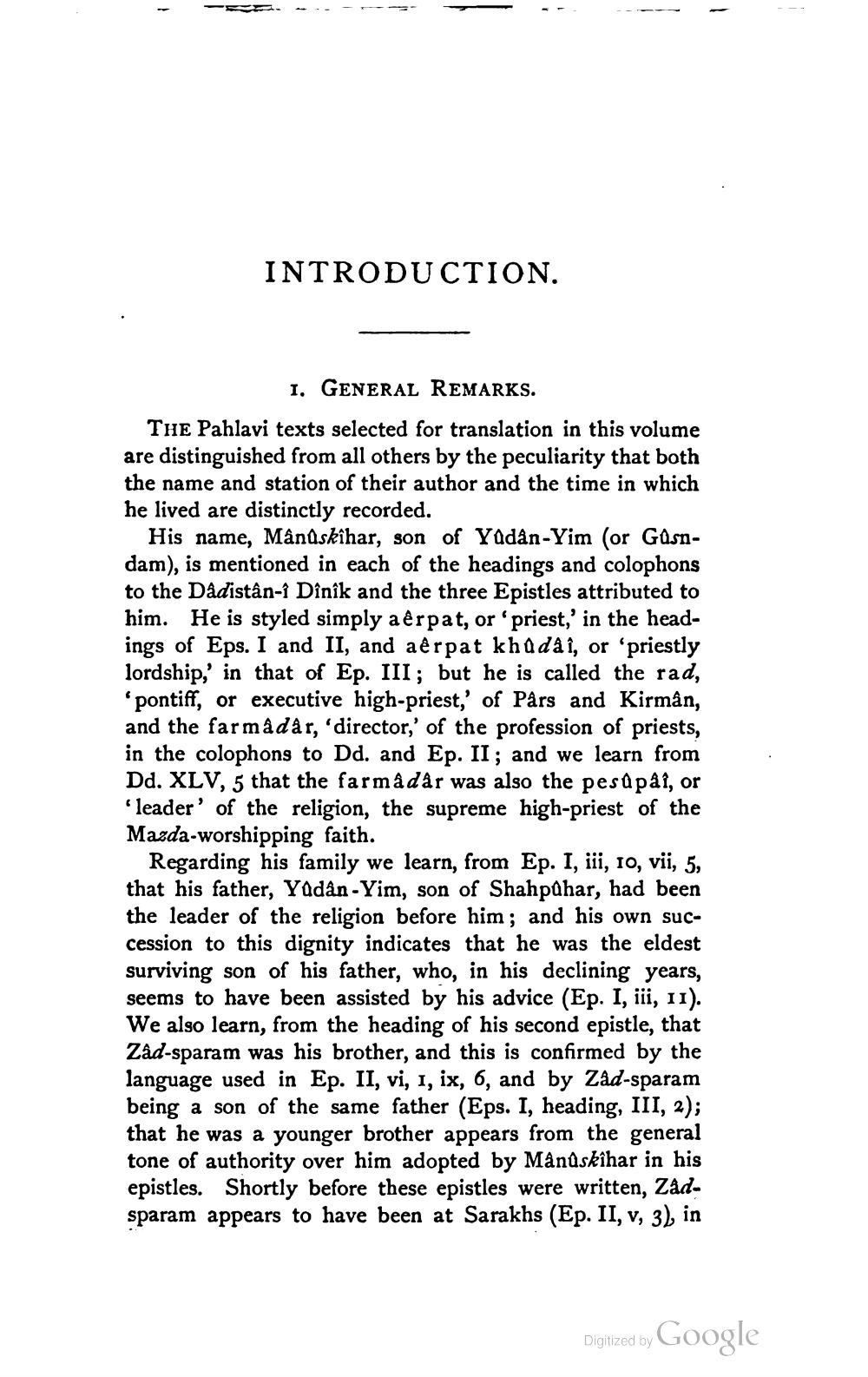________________
INTRODUCTION.
1. GENERAL REMARKS. THE Pahlavi texts selected for translation in this volume are distinguished from all others by the peculiarity that both the name and station of their author and the time in which he lived are distinctly recorded.
His name, Mângskîhar, son of Yadan-Yim (or Gasndam), is mentioned in each of the headings and colophons to the Dadistân-î Dînîk and the three Epistles attributed to him. He is styled simply a êrpat, or 'priest,' in the headings of Eps. I and II, and aêrpat khadà i, or 'priestly lordship,' in that of Ep. III; but he is called the rad,
pontiff, or executive high-priest,' of Pars and Kirmân, and the farmàdar, 'director,' of the profession of priests, in the colophons to Dd. and Ep. II; and we learn from Dd. XLV, 5 that the farmà dar was also the pesapai, or ' leader of the religion, the supreme high-priest of the Mazda-worshipping faith.
Regarding his family we learn, from Ep. I, iii, 10, vii, 5, that his father, Yadân-Yim, son of Shahpühar, had been the leader of the religion before him; and his own succession to this dignity indicates that he was the eldest surviving son of his father, who, in his declining years, seems to have been assisted by his advice (Ep. I, iii, 11). We also learn, from the heading of his second epistle, that Zad-sparam was his brother, and this is confirmed by the language used in Ep. II, vi, 1, ix, 6, and by Zad-sparam being a son of the same father (Eps. I, heading, III, 2); that he was a younger brother appears from the general tone of authority over him adopted by Manùskihar in his epistles. Shortly before these epistles were written, Zadsparam appears to have been at Sarakhs (Ep. II, v, 3), in
Digitized by Google




